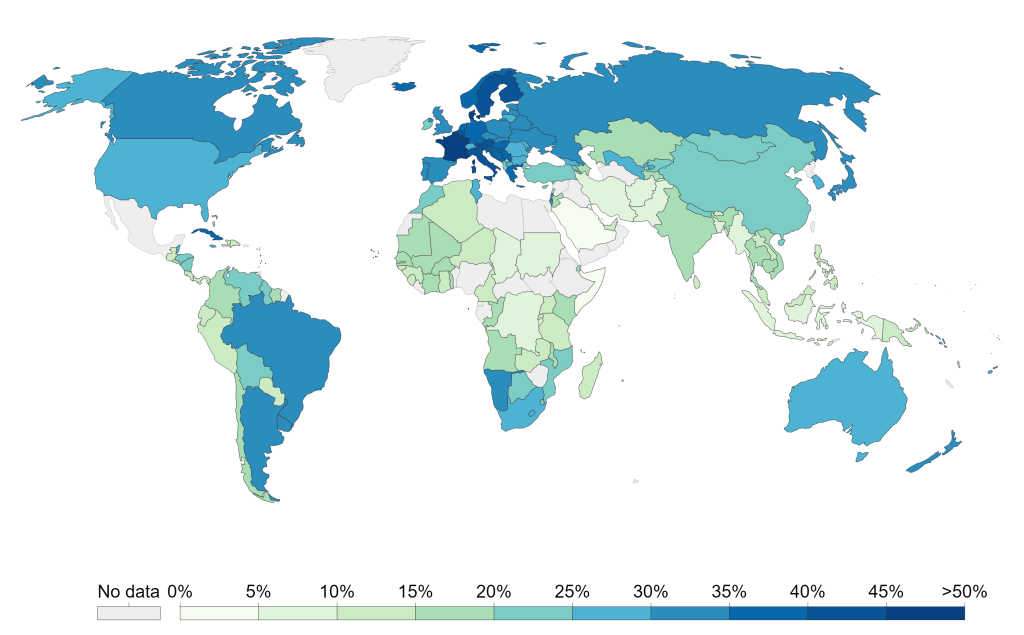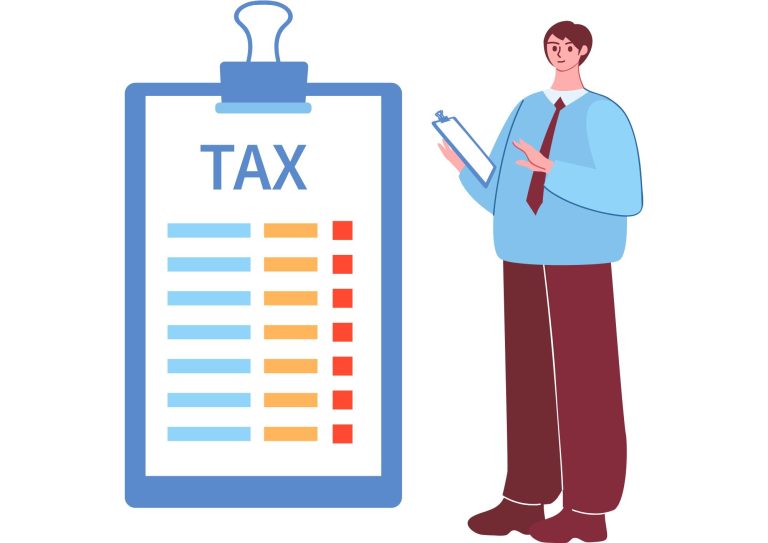Taxes are mandatory fees charged by the government from its citizens and other entities like businesses. They are the vehicle used to meet expenses related to the general government services, goods, and activities. The amount of tax is usually calculated based on your income or the price of the products or services you have bought.
Taxation is the process by which the government of a given country collects income from its citizens by making them pay taxes.
Taxes do not provide immediate benefits to the taxpayer. The organization vested with the right to collect, assess, and account for taxes in Kenya is called the Kenya Revenue Authority (KRA).
What are taxes used for?
Tax money is used to:
- fund government activities and programs like building and sustaining infrastructure for instance, roads.
- fund programs that provide public benefits like education and healthcare.
- pay salary to the people who work in the government offices
- train law enforcement officers like the police or military and buy equipment for law enforcement.
- set limits or prohibit the consumption of toxic items such as alcohol and tobacco.
- discourage the importation of certain commodities because they are heavily taxed, hence protecting local industries.
- control inflation where high taxation will curtail the income of people and subsequently, reduce the amount of money supply in the market.
How do taxes work?
Taxes is one of the ways that allows individuals to pay a portion of their income in the pool. This pool will then develop funds that are used for services that everyone can enjoy.
The revenues collected by taxes go to the development and support of essential services and programs which we need. These vital services and programs that all of us use and rely on, include schools, roads, parks and hospitals. Without taxes, the government would find it hard to provide all the key services for everyone.
Therefore, citizens are legally required to pay taxes. These taxes are primarily used for the construction of public amenities, provision of public services for example providing healthcare, education and the law enforcement, and salaries of the people who are employed in the mentioned sectors. The tax system is always making sure everybody is giving what they are supposed to and thus meeting their tax obligations.

Characteristics or principles of a good tax system
- A decent tax system should be simple enough for any taxpayer to understand. This will motivate them to pay taxes – Principle of Simplicity.
- To ensure tax fairness, several forms of taxation should be in place so that every strata of the society is paying the taxes.. This also ensures that the government always has money – Principle of Diversity.
- The tax system should target products of mass consumption to be able to collect more income for the government – Principle of Elasticity.
- A tax system should be constructed so that the amount levied is not so high that contributors are unable to pay or are discouraged from working hard (ability to pay or non-oppressive)
- Every subject should pay tax proportionally to their income. This means that those at the same level of income and circumstances should pay the same amount of tax. Also, if you earn higher incomes, you should pay proportionately higher amounts of tax than those earning less, according to the principle of equity – Principle of Equity.
- The mode of tax payment should be convenient for both the payer and the recipient – Principle of Convenience.
- The cost of tax collection and administration should be less than the amount of tax collected – Principle of Economy.
- The tax system must be possible to adapt to changing economic conditions; that is, when people become better off, the system should generate more revenue – Principle of Flexibility.
Classification of Taxes
Taxes are classified according to:
a: Structure of the tax
b: The effect of the tax on the taxpayer
a. Classification According to the Structure
In this case, taxes are classified based on the connection between the amount of tax paid and the income of the taxpayer. These taxes are progressive, regressive, and proportional.
i. Progressive taxation
This is a system where tax rates are adjusted in accordance with income. It has the aim of promoting fairness by either charging people with bigger incomes with higher rates and the ones with the smaller incomes with lower rates or vice versa. This system is supposed by fairness because it is lowering the income inequality. This tax assumes that a specific amount is all that is necessary for a comfortable life. For instance, taxes may be as follows: If you earn between Ksh. 0 and 5,000, the tax rate is 20%. If it increases to between Ksh. 5,001 and 10,000, the tax rate increases to 25%. Assuming it further increases to between Ksh. 10,001 and 15,000, the tax rate also increases to 30%.
ii. A regressive tax
It is a kind of tax that affects the lower-income part of population more than the high-income earners. The fax burden is carried unfairly by the poor (the inverse of progressive). The assumption is based on the belief that the person who feels it is necessary to buy an item sees the value obtained from it to be equivalent to its price, which includes tax. For example, under sales tax, everyone pays the same amount regardless of income level.
iii. Proportional Tax
The tax rate does not change no matter on what the income level or property value to be taxed is. Assuming the rate is 20%, a person who earns Ksh. 10,000 will pay Ksh. 2,000. Similarly, a person who earns Ksh. 100,000 will pay Ksh. 20,000 in taxes.
iv. Digressive tax: This is a tax where tax rate is incremented until it reaches the certain maximum rate, after that one, uniform tax rate applies for every further income.
b. Classification According to the Impact on the Taxpayer
Taxes are classified as either direct or indirect based on their impact on the taxpayer.
i. Direct tax
These are taxes that have the same impact and occurrence on the same person. It is not possible to shift or pass on any portion of the tax burden to others. This is a tax on the income, earnings, and property of people and companies. Direct taxation includes the following:
⦁ Personal income tax
An example of this tax is pay-as-earn (PAYE). The tax levied is from people that are in gainful employment. It is usually paid through a check-off method. This means that the employer deducts it from the employee’s salary and transfers it to KRA.
PAYE applies to bonuses, director’s fees, commissions, weekly wages, monthly salaries, and annual salaries. A personal relief, that is, a tax credit, is provided to every resident employee under PAYE. In addition to that, insurance relief and mortgage interest deductions are also provided to qualifying employees.
⦁ Residential Rental Income Tax
This tax is a levy on the the earned rent on property owners in Kenya.
⦁ Corporate income tax
This is the taxation of the profits of a company. It is usually proportional. It is charged on the annual revenue generated by business bodies such as limited corporations, trusts, and co-operatives. Resident companies pay 30 percent of their taxable profits. Branches of non-resident companies are charged 37.5% of their taxable profits.
⦁ Withholding Tax (WHT)
This is levied on specific sources of income such as interest, dividends, royalties, management fees, performance fees, commissions, pensions, non-resident rent, and other specially defined type of payments. The rates of the taxes collected vary according to the status of the payer, that is, whether he or she is a resident or not.
⦁ Stamp duty
his is the tax charged on the transfer of land or securities from one person to another.
⦁ Estate (death) duty
This levy is imposed on properties that are transferred after the owner’s death. The tax assists in increasing government revenue as well as spreading income because the inheritor did not work for it.
⦁ Wealth tax
This is a charge imposed on the well-being of an individual above a certain limit.
⦁ Capital gains tax
This refers to the tax paid on proceeds received from the disposal of an asset at a price higher than its book value.
⦁ Capital transfer (gifts) tax
This is a tax paid on the value of property being gifted from you to someone else. The purpose of the tax is to close those loopholes that allow wealthy individuals to avoid paying taxes by transferring property to their friend or a relative as a gift. The nature of this tax is progressive. Nevertheless, it does not involve transfer between spouses or to charities.
⦁ Advance Tax
It applies to public service and commercial vehicles. The owners pay the taxes in advance before they get their commercial vehicles registered.
ii. Indirect tax
These are taxes where the impact is on one individual while the incidence is mostly or entirely on another. The taxpayer has the option of shifting all or a portion of the tax burden to another person. These taxes, which are typically calculated based on the revenue derived from consumer spending on goods and services, consist of the following.
⦁ Sales tax: This is based on sales. It can be computed as a fixed amount or as a percentage of sales. For example, every Ksh.2 per kilogram sold should be paid as tax. The tax can be collected either at a single or at several points of sale. Value Added Tax (V.A.T.) has replaced sales tax in Kenya.
⦁ Value Added Tax (V.A.T.): This implies a tax pertaining to the value added to the p This tax is borne by the consumer at the final price when they buy any taxable goods and services.
⦁ Export duty: It is a duty or tax paid on exports. This aim could be to increase profit or to prevent the exploitation of certain resources.
⦁ Import duty: The duty is charged on the goods that are imported. It helps increase government revenue by minimizing the dumping of undesirable things from other nations. It also protects the domestic industry and fosters domestic production by limiting the importation of foreign goods.
⦁ Excise duty: This is a kind of tax slapped on some imported goods and on some goods created and sold within the borders of a country. Some of these goods that are charged excise duty include wine, bottled water, soft drinks and cigarettes.
Conclusion
Taxation is a critical activity where governments extract resources from members to seek to finance various services and activities by the state. Taxes are important to provide funds for infrastructure development, education, health, policing services, and other services. The tax system tries to achieve the aspects of fairness, simplicity, diversity, elasticity and convenience in the collection of revenue. Taxes are categorised depending on their nature (progressive, regressive, proportional or digressive) and their effect on the tax payer (direct or indirect). Some of the examples of direct taxes are personal income tax, corporation tax, withholding tax among others, while indirect taxes are sales tax, value added tax, export duty, import duty, excise duty among others. It is crucial for you to be aware of what taxes there are and how they are used so that everyone and every company could properly play their part in the development of society.


